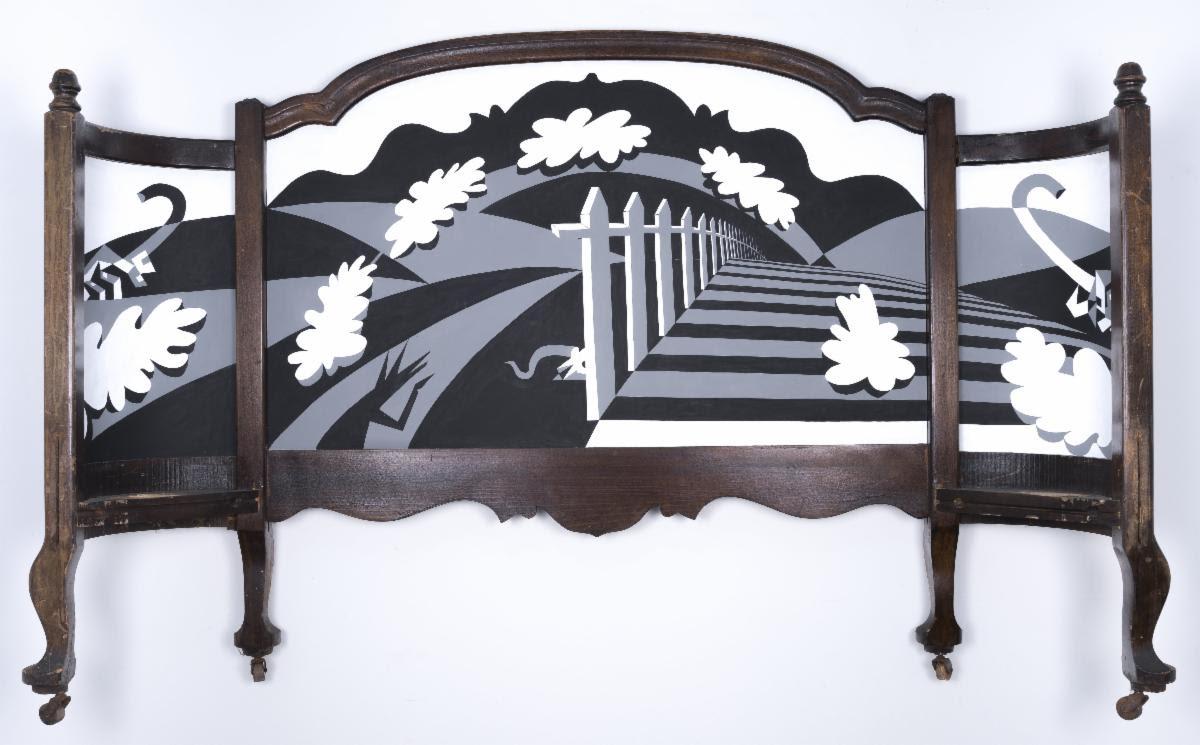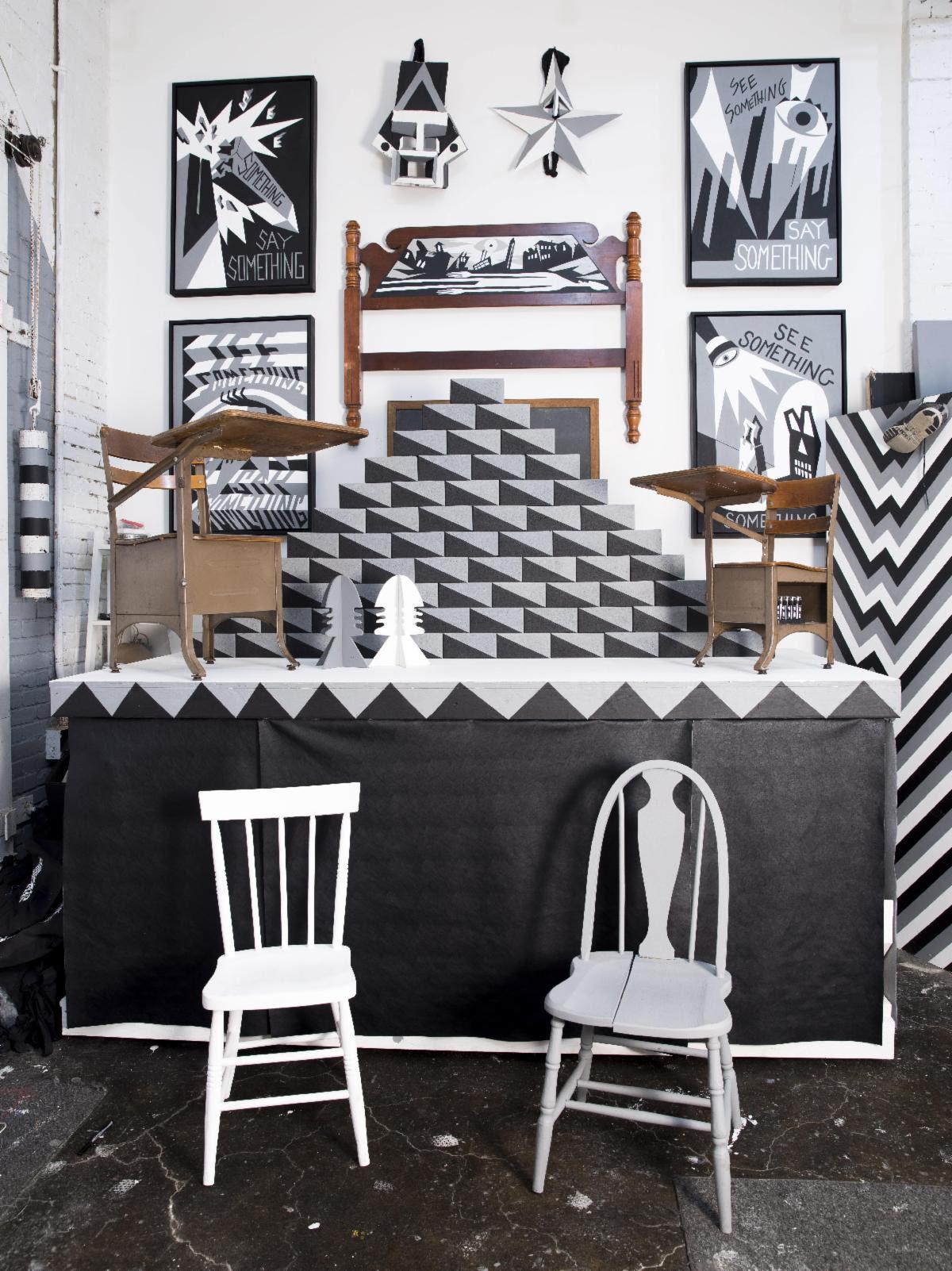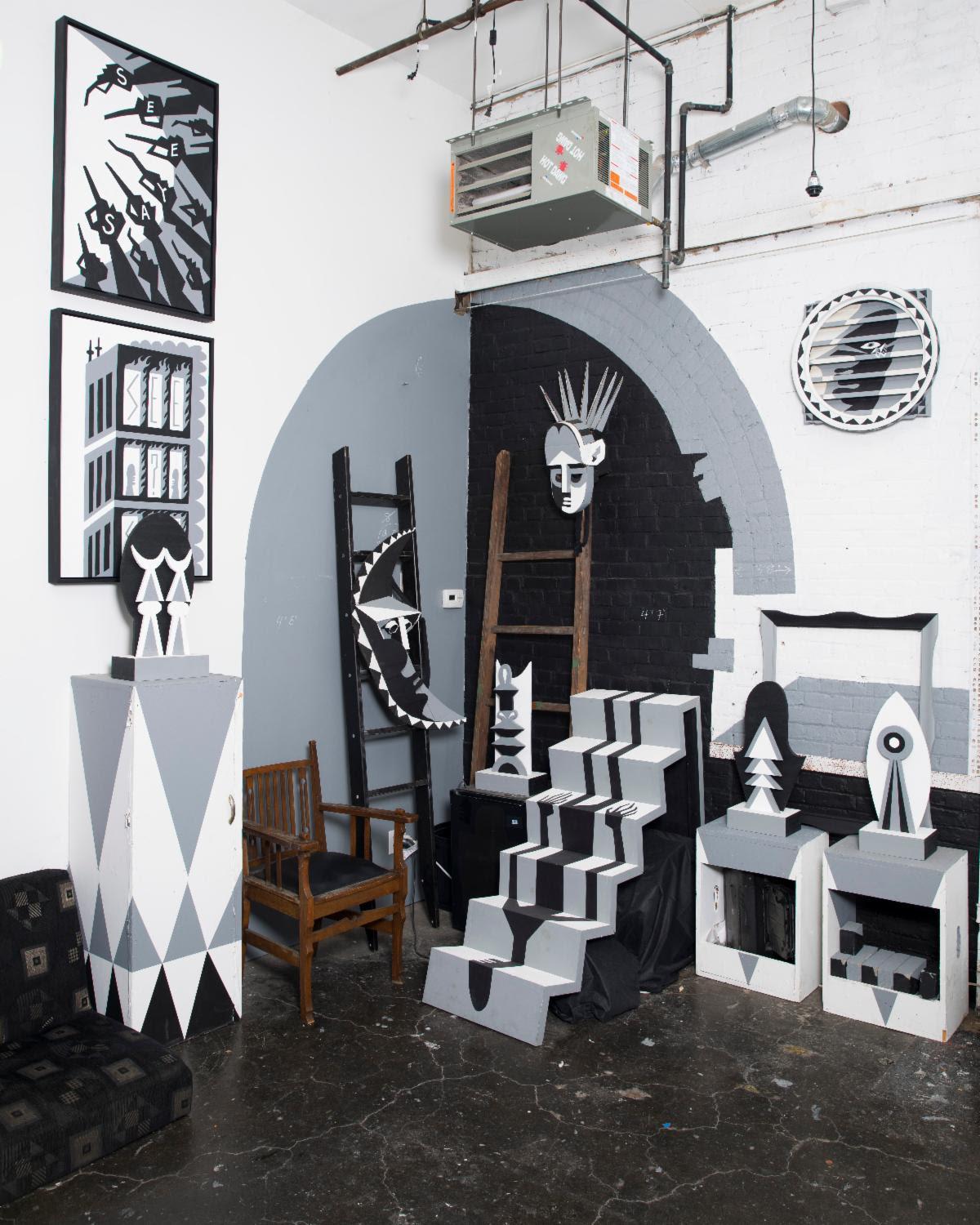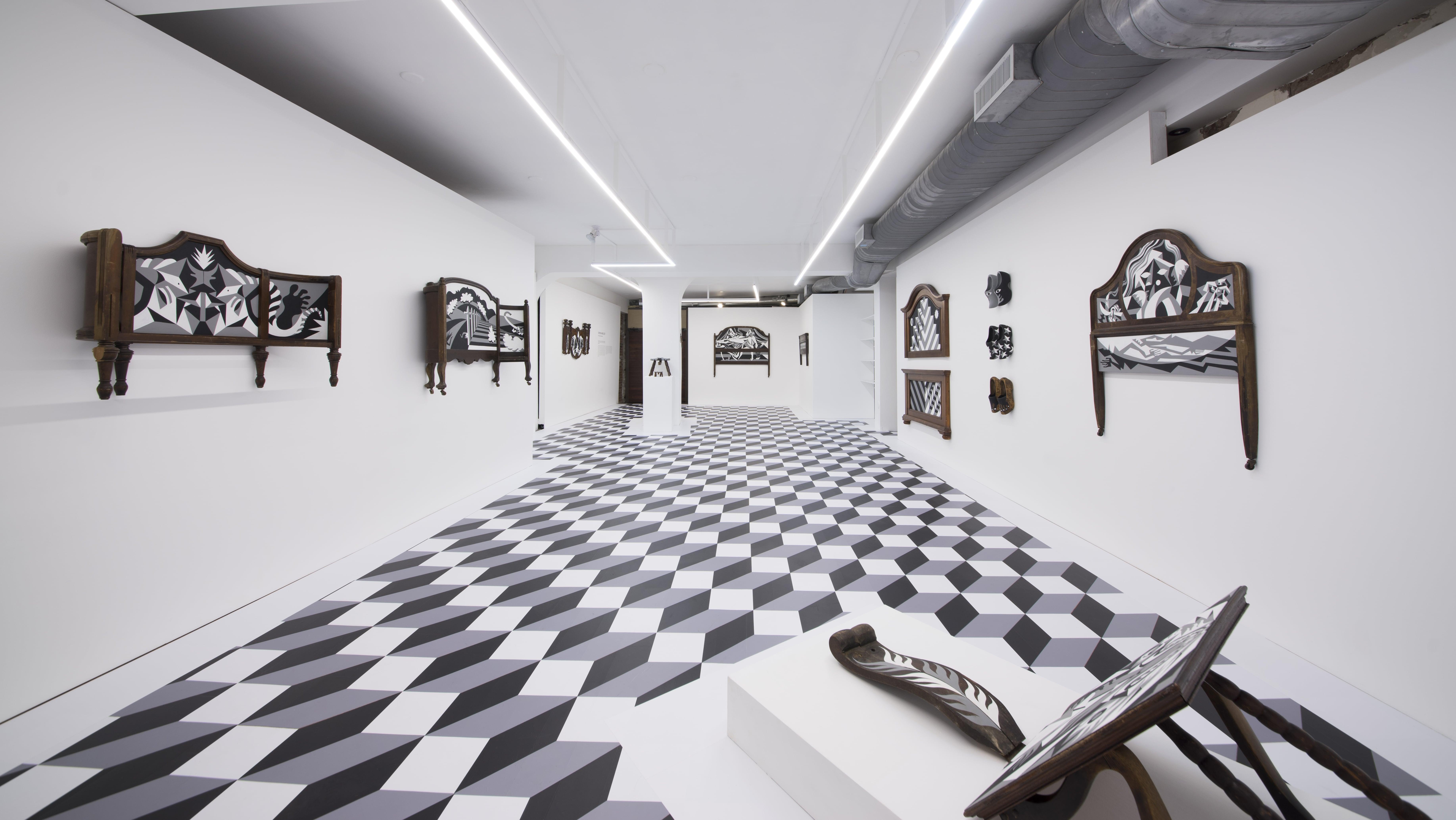Bock has said that Somnambulist reflects the Surrealist tendency to “make functional items nonfunctional.” He further believes that our unprompted contact with Surrealism is activated solely during sleep, during which the meaning of recognizable objects falls into oblivion and is replaced with non-narrative and vaguely associative images. When we sleep, we enter a state of complete vulnerability, thus Bock questions whether or not we are in control over the activity of our subconscious. The works of Somnambulist constructed from pieces of everyday found objects that appear unnameable in final form still have a vague tether to the familiar.
A large portion of the exhibition is executed on headboards Bock acquired during a transformative residency at Boyd’s Station in Kentucky. As a result, much of the subject-matter Bock renders is entirely new to his overall body of work: a surprisingly bucolic—if not quietly eerie—scene depicts the ancient practice of counting sheep. In experiencing both the metropolitan and rural sensibilities of the country, he highlights a disturbing social division reminiscent of the times leading up to WWII. The works, therefore, are the reification of the political duality he observed over the course of the exhibition’s creation.
Although the concepts behind Somnambulist take root in the 1920s, Bock works within the context of a much more digitized, globally-connected world while hearkening from ancient mythology to stories of the supernatural. The breadth of this work spans humanity, invoking an emotionally and psychologically profound consideration of sleep.
Says the artist: “I’m here to report, not to provide anyone with a false, idealized version of the world. In terms of what I’m trying to communicate: I hope that it’s hopeful. I hope that there is hope.”
Somnambulist will be on view through November 23rd. Gallery hours are Tuesday through Saturday, 11-7pm.




























